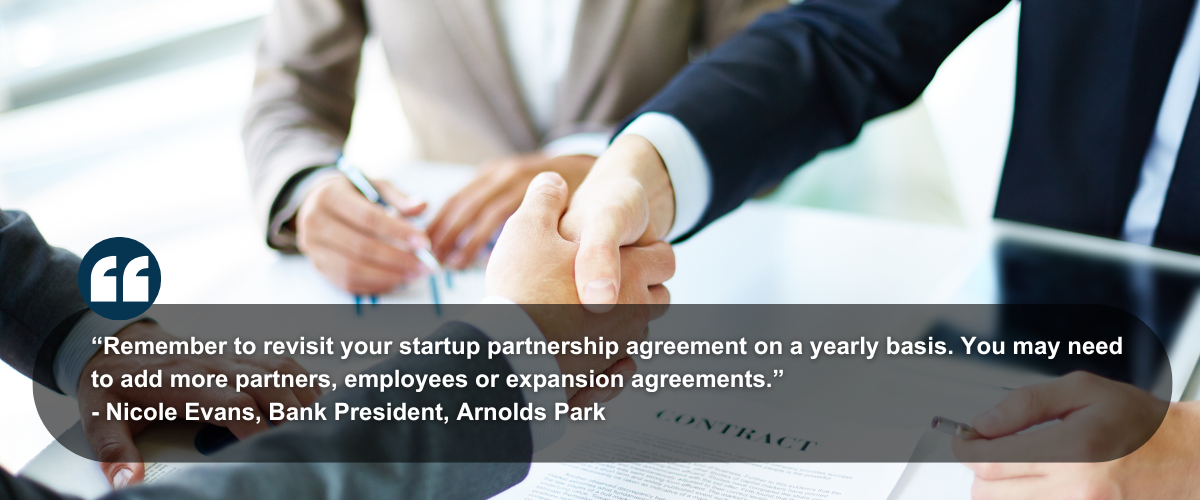
You have a game-changing small business idea for an innovative product. But you may need help turning it into reality and decide you want to bring on a business partner. They can share their skills and knowledge, offer financial support and connect you with potential customers.
Adding a business partner can be good for your business when done right. Before you dive in, it’s important to understand the basics of forming a partnership. Follow these best practices to pave the way for success.
Being a partner is different from being a co-owner. Ownership of an asset by more than one person is called co-ownership. Both individuals own a percentage of the asset and share income and expenses. For example, a husband and wife who decide to purchase a home together are co-owners of that specific item.
Alternatively, a partnership is recognized as a business organization where two or more people carry out a business for the purpose of earning a profit. For instance, if a husband and wife buy a facility with the goal of starting a business with a partner, it would be considered a partnership.
A partner:
There are three types of small business partnerships you can choose from.
A partnership is recognized by the law – Partnership Act 1932 – as a business entity. Before forming a business partnership, talk with an attorney. They can draw up an agreement that works for both you and your partner. It’s the best way to protect your and your partner’s interests as well as what’s best for the business.
Seek out a tax advisor who can help you and your small business come tax time. For instance, a partnership files an annual information return to report income, deductions, gains and losses, but does not pay income tax as a business.
You may think that starting a partnership with someone you know, like a friend or family member, is the best route. But, it’s more important to find a business partner who agrees on the same values and goals to create a shared vision of the business.
They should also have the right skills and experience for the role. Finding a partner in business with complimentary skills is key. For instance, if you are good at marketing, try to find a partner who can manage the finances.
You want a partner who is financially stable. A business partnership typically requires sharing expenses as well as profits, so make sure your partner brings a solid financial background to the table.
Any number of partners can be involved in a business. However, you need the right players at the table. Each person is responsible and accountable for the success of the business.
Dustyn Wikert and Schuyler Johnson formed their partnership by looking for these key factors. They met in college and formed a strong friendship. After college, Dustyn pursued a career in restaurant management and banking and Schuyler in youth work and real estate. A few years later, a chance meeting in Las Vegas sparked a casual conversation that led to eventually forming a business partnership, starting with the Nautical Okoboji. Now they operate several businesses together.
Write a partnership agreement
No matter who you partner with, set clear expectations from the beginning with a written partnership agreement. It's critical to the success of your small business. Business partnership agreement template samples are available for free online through the Small Business Administration Resource Score to help you get started. Your lawyer should always review and revise your draft before you finalize it. A business partnership should include the following information:
Once your lawyer approves the business partnership agreement as legally binding, you and your partners can sign it to make it official.
Remember to revisit your partnership agreement on a yearly basis. You may need to add more partners, employees or expansion agreements.

Partnerships can dissolve for many reasons, including the recognition that you have different management styles. For instance, you may decide to partner with someone because you work well together but soon realize your operational styles are not compatible.
Work with your attorney to include a partnership dissolution in your business partnership agreement. It will outline how the person leaving will be paid for their time, resources and involvement in the business. If you sell your business, write down how you’ll divide the proceeds from the sale.
You may decide to add a partnership exit strategy to your agreement in case you or your partner eventually want out of the business.
Take some time to discuss the different scenarios that could happen and how you would handle them. This will give you the best chance to end your partnership on better terms and in a way that’s best for the business.
Your commercial banker can guide you through how to start a partnership business, business bank account options for your business partnership and different strategies you can use. They can also discuss what small business banking services are available and small business loans for business partnership, and they can direct you to financial resources from the Small Business Development Center (SBDC). The SBDC may be able to help you find information on a business partner program that could benefit your startup business.
Contact our team of commercial bankers today to learn more about how Northwest Bank can help support your startup business.